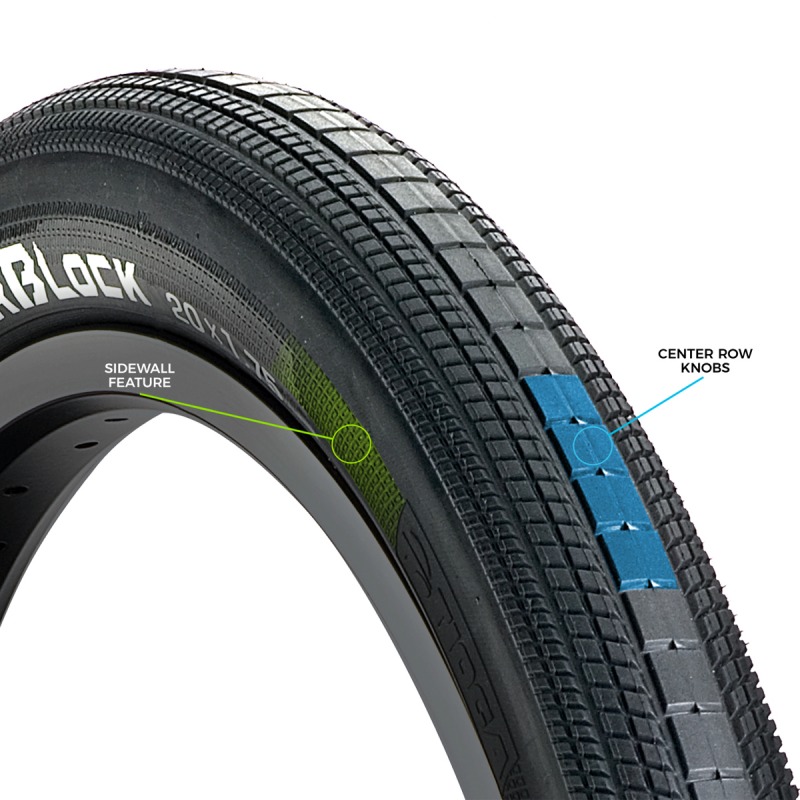


Weight shifts and body movements had a definitive and predictable effect on how the tyre behaved as well. It didn’t suddenly break away or lose grip without warning, instead it steadily drifted around turns the gradual nature of its slides meant that cornering hard and fast was predictable, controllable and, most importantly, fun. At higher lean angles, there was plenty of predictable traction that was easy to modulate and control, especially once the tyre had begun to understeer. The DHF and Assegai are both famed for their ability to grip – and keep on gripping – in corners, and the same was true of the Edge-22. This was because its outer-most shoulder blocks aren’t significantly different in angle or shape to its direct competitors, meaning there’s no reason it should be able to lean over further in turns, which proved true during testing. However I found the Edge-22 wasn’t able to reach lean angles much greater than the Maxxis Minion DHF or Assegai – arguably its closest rivals – no matter where I rode it. Out on the trail, it wasn’t the Edge-22’s lean angles that impressed me the most, but the tyre’s predictability and general composure over a host of different terrain types and trail conditions. I found the Edge-22 to have fantastically predictable cornering traction. The design does this while also offering a more predictable transition onto the outer row of knobs as lean angles increase because there isn’t the gap between the central blocks and side knobs, seen on a lot of other tyres on the market. It hopes this will mean more grip at lower lean angles and increased grip at more extreme angles. Tioga says that at the most “frequently encountered lean angle range” both the inner and outer blocks are gripping into the terrain. As the lean increases, the centre knobs remain engaged, but the outer ones start to bite, too. The more central blocks, Tioga claims, engage and bite into the ground as soon as a rider initiates a turn at small lean angles.
#TIOGA POWERBLOCK FULL#
This is because the centre of the tyre has an open channel rather than being full of knobs, and the only vertical blocks are placed in two rows towards the tyre’s edges. Tioga claims its open centre design increases the amount of block edge in contact with the trail’s surface at any given lean angle. The large central channel is claimed to improve cornering grip.


 0 kommentar(er)
0 kommentar(er)
